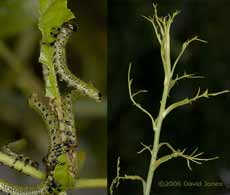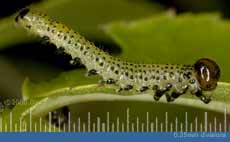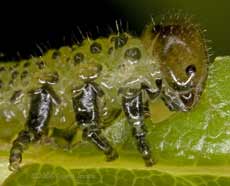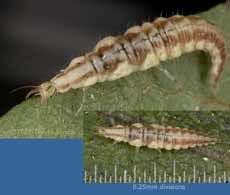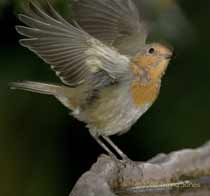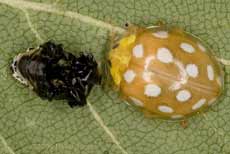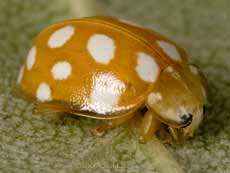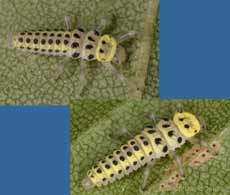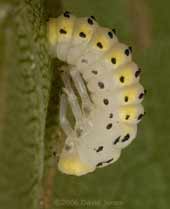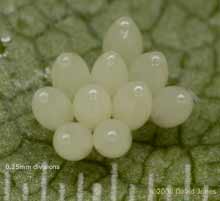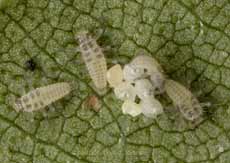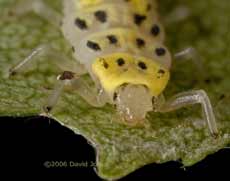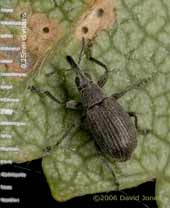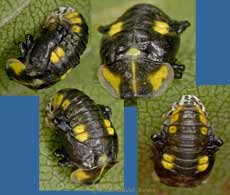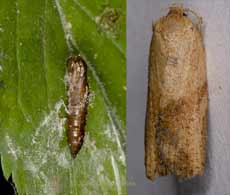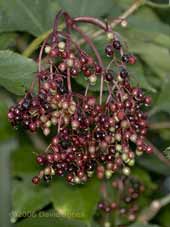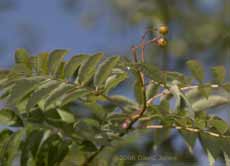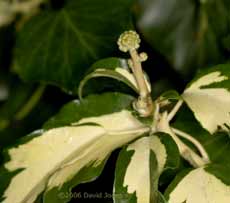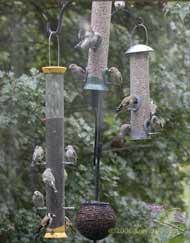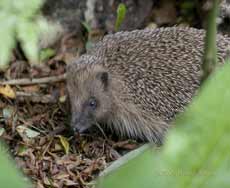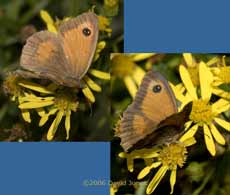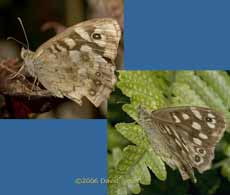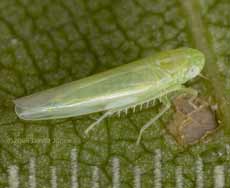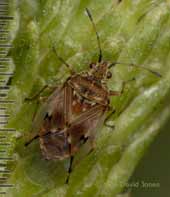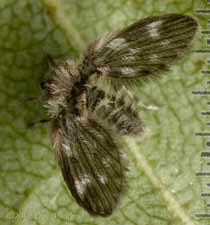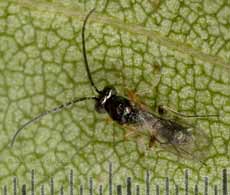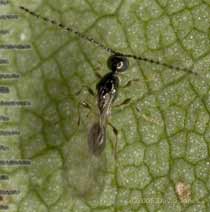Go to the last entry on this page .....Go to previous entryA note about the holiday. I'm in the middle of sorting out a diary entry for our trip to Cornwall and I hope it will be ready in the next few days. During our trip I had hoped to maintain my diary entries, but at the end of the first week my old laptop started playing up again, and the hard drive that I had been using to store both my photographs and diary refused to function. I bought a new laptop near the end of the holiday, and yesterday evening I have just succeeded in recovering those files and now need to process them. 13 August - A belated resumption of the diary after our return from Cornwall four days ago. We came home very early on Wednesday, leaving the Lizard at 1.50am. It meant that the roads were quiet for most of the way, but once we had unpacked, the rest of the day was spent in a daze. The next morning didn't get off to a good start. I started to reply to e-mails when I smelled something burning - moments later both monitors went blank. After a brief period of despondency (and breakfast) I opened up the PC and eventually established that the fan on the graphics card had seized up, resulting in the graphics processor overheating. It meant a trip to our local computer store before the PC was up and running again. Friday was largely taken up doing some preparatory work before we put up some new fencing between us and a neighbour. and yesterday was taken up with recovering! Rainfall before our return had helped to make parts of the garden green, but many of the plants have clearly suffered from the drought and high temperatures of past weeks. On our return it seemed almost as though Autumn has arrived with us. It rained for much of our journey home, and it has seemed quite cool. I even resorted to a fleece for a while yesterday, and today we ate our evening meal inside for the first time since long before our holiday. Today we have had the wettest day I can remember for a very long time. Not only are all the water butts full (they were almost empty as of yesterday), but the ponds are overflowing. Below the West Wing the rest of the garden has been under water and we had a stream flowing across us (we live on a hill) for much of the afternoon. Since we came home we have been getting frequent visits for the Goldfinches, with up to ten here, including four juveniles. The House Sparrows had emptied their feeder in our absence and it took them a couple of days to reappear, but when they did there was a fledgling being fed. On the day we came home I saw a House Martin coming out of the nest that had been used for nesting, but I haven't seen any since then. I'm finding it a bit difficult to keep working by the computer for very long at the moment, which is why I've been slow to resume my diary, but hopefully photographs will start appearing tomorrow.
15 August - Since that amazing downpour there hasn't been any more rain, which is fortunate for those homes and businesses that were flooded two days ago. During the storm my eldest son was on duty with Hampshire Fire and Rescue and found himself having to drive through floods several feet deep, and yet someone I spoke to today lives just a couple of miles away and was having a barbeque while we were getting drenched! Still no holiday pictures. They are getting sorted slowly, but I'm afraid that I'm having a bit of a frustrating time with my CFS and that I'm still only able to spend short periods by the computer. I actually did manage to do a bit of plant pruning today, a job that resulted in a few pictures being taken to record two types of insect larvae that I found.
First of all, a rose bush on the far side of the big pond seemed to have rather skeletal upper branches (right image). A closer inspection quickly established the culprits as these sawfly larvae.
Just like the sawfly larvae that I have found on the Birch tree, these reacted to disturbance by raising their abdomens. There were a couple of very small individuals but most were about 11-12mm in length.
The larva feed by straddling the edge of the leaf and working its way along, rocking its head up and down as its vertically aligned jaws nip off pieces of tissue. As the damage to the rose shows, feeding as a group they are very efficient in the way they strip eat the soft tissues of the leaves, leaving only the toughest veins.
The only other insects that I found were aphids on some of the leaves. These are the prey of the Brown Lacewing larva, so I put it onto a populated leaf but it showed no interest in them I wasn't able to see it feed.
At the bottom of the garden, the Birch yielded little to an inspection. The Orange Ladybirds seem to be having a bad year. I could only see one (newly emerged) adult, and two larvae, although I also saw a clump of eggs on one leaf, so I will expect to see more larvae in the weeks to come. There is still no sign of any other ladybird species in the garden. There are still Leaf-cutter bees actively working on their new broods, as are a few of the solitary bees at the bee hotels. The Leaf-cutters have been particularly interested in using the leaves of one particular rose plant that it adjacent to the tubes they use, and the Willow that I pruned today (leaving plenty of leaves for the bees, of course!).
As well as the young birds I mentioned in my previous entry, we are getting frequent visits from adult, and at least three juvenile Robins. The youngsters can be distinguished by the varying degrees to which their red breasts are developed. The picture shows the most advanced of them at the birdbath.
I will be making occasional entries in the House Martin diary over the weeks to come. It seems that the Martins may have started a second brood in the same box that they used in the Spring. It looks as though they are incubating at the moment, with occasional 'shift changes' taking place during the day, although I will need to watch over a few more days to confirm this.
16 August - Another dry day, and I hoped to do a bit of fencing work, but had to settle for plumbing instead to deal with a problem in our bathroom!
Notice the little bit of white material (with black spots) to the left. This is the skin shed as the larva pupated.
This second adult is much more mature, with a deeper orange colouring. It was at rest, with its head, antennae and feet tucked in. A few minutes afterwards I saw it on the move.
I was able to find just six larvae this morning, five (including these examples) were similar in size, about 10mm in length, and just one much smaller individual.
There was no sign of any pupae, but I did spot this larva, attached to a leaf by the rear end of its abdomen, and which is preparing to pupate. This evening it remains unchanged, hanging from the leaf but curling closer to the leaf if disturbed.
17 August - With the exception of one heavy shower in the late morning, today was pleasant, with periods of warm sunshine, allowing me to do the fencing job that was postponed from yesterday. There is another bit to do before I'm finished, but that has to wait until a job being done in my neighbour's garden is finished. Continuing with the Orange Ladybirds, I can still see just two adults on the Birch, and the pupating larva photographed yesterday looks exactly the same this evening. I'll be checking it again last thing tonight as I have still to capture the moment when a larva moults, and I've now found a second one at the same stage.
Here is the small cluster of eggs that I mentioned two days ago. Each egg measures around 0.8x0.5mm.
When I checked the tree last night I found this second cluster with newly hatched larvae around it - one looks as though it has only just emerged. When I looked again this morning, the larvae were no longer on that leaf.
Another picture of a larva, this time a close-up
Another insect that I find every time I search the leaves of the Birch is this very small, black weevil, measuring just under 2.5mm in length. A web search has come up with a possible ID - the Strawberry Blossom Weevil (Anthonomus rubi). This is a blossom weevil. In early Spring these lay their eggs in the flower buds of various plants of the rose family. When adults appear in June/July, they feed on leaves before heading down into the plant debris on the ground to hibernate.
Coincidentally, as seen in the above image, quite a few Birch leaves have numerous small, round holes in them, surrounded by brown areas. Could these have been produced by these weevils?
18 August - A showery day with bright spells. I needed to get some jobs done in the garden before the weekend, when my tool shed will remain locked, so I had little time to take photographs (or work on my holiday pictures).
However, I have recorded the change that has taken place to the Orange Ladybird larva that was starting to pupate when I last photographed it two days ago. Once again I've missed the transition to pupa, which must have occurred overnight.
19 August - A brighter day with just a few showers, which was good as we had to have a new windscreen fitted to our Discovery after a stone hit it on our way home from Cornwall!
I can report that the caterpillar formed a chrysalis and subsequently this moth emerged. Looking through my moth guides, the nearest match I have found so far is the Dark Oblique-barred Twist, the caterpillar of which behaves in a similar way.
On a positive note, the Elder twig that the caterpillar was on has thrived, growing both roots and new shoots.
The actual Elder plant now has its best crop yet of berries which are a wonderful mixture of colours at the moment as they head towards ripening.
In contrast, while I do have to describe it as the best yet, the Rowan has just two berries this year - it looks as though the birds will have to wait another year, at least!
The Hawthorn has berries, but this year it is a reduced crop as a consequence of my decision to prune it a bit more drastically than for a few years.
At the bottom of the garden the Ivy is gearing up for its Autumnal offering of flowers, with clumps of tightly closed buds at the ends of most branches.
The sunshine brought out small numbers of solitary bees at the hotels, and several leaf-cutter bees were busy carrying pollen and leaves back to their bamboo tubes. A serious rivalry has started up between two of the immature Robins as they start to think about territorial rights. Their squabbles distract them from noticing the Dunnock(s) that come to feed without being chased off. A Sparrowhawk visited this morning but left without a catch. At the moment we are only seeing glimpses of a female Blackbird. I don't think I've seen a male here since before our holiday. I've added a couple of photographs and a note in the nestbox diary after spending a short time watching the House Martins this afternoon.
20 August - Apart from a few spots of rain, it has been a dry day, but really autumnal. The only reason for remembering that it is still August is the fact that the leaves are still green on the trees. I spent quite a bit of the day sorting out a platform for me to stand on inside the Blue Tit nestbox tower - a job I should have done years ago. From now on I will not need to perch on a ladder to watch and photograph the birds in their nest. Sometime before the winter I will be making some changes inside the tower, particularly to the very untidy wiring.
This photograph records a typical scene around 8.30am. There are actually sixteen Goldfinches, including eleven juveniles, although one on the far side of the top feeder has only a couple of pixels of its tail visible! There is one Sparrow that wanted a share of the Sunflower seeds.
A few minutes after the Goldfinches left, this large and healthy looking hedgehog appeared under the Hawthorn. After spending a few minutes foraging about and eating some chopped peanuts it headed back down the garden. Later in the day I noticed some dry grass scattered along the pathway to the hedgehog house under our metal shed. There is already straw in there, put in before we went on holiday.
Tonight I've scattered talcum powder across the pathway in an attempt to 'see' hedgehog footprints going to or from the entrance to the house. During the day I have continued to take advantage of the dry weather to do work outside, although I needed to take more breaks today, and didn't get very much done.
An excuse to stop for a while came when the first butterflies for nearly a week made an appearance. First, a Large White visited the Buddleia, and then this Gatekeeper turned up, feeding on the Ragwort and finding spots to spread its wings in the sunshine.
Then, with the Gatekeeper still in the garden, this Speckled Wood fluttered in. Not interested in the Ragwort, it moved amongst the vegetation, opening its wings only briefly.
A slight time shift backwards now to last night, when took my camera with me to check the Birch tree. I can now locate three Orange Ladybird pupae, a dozen or so larvae, but still no more adults. In all the following pictures the scale shows 0.25mm divisions -
As well as the ladybirds, its usual to find other residents, such as this green leafhopper (these usually scurry to the other side of the leaf as soon as I shine a torch on them)
and this Birch Catkin Bug (Kleidocerys resedae) with its neat rows of rivet-like markings.
There are also insects that use the shelter of the leaves to roost for the night.
I often see Owl-midges, although they tend to fly off when the torch beam lights illuminates them,
and various gall or parasitic wasps. Last night I could find two, neither of which I can identify.
This smaller one, measuring less than 2mm in length, has hairy, almost 'string of bead'-like antennae, and its wings are also fringed with hairs.
|
|
